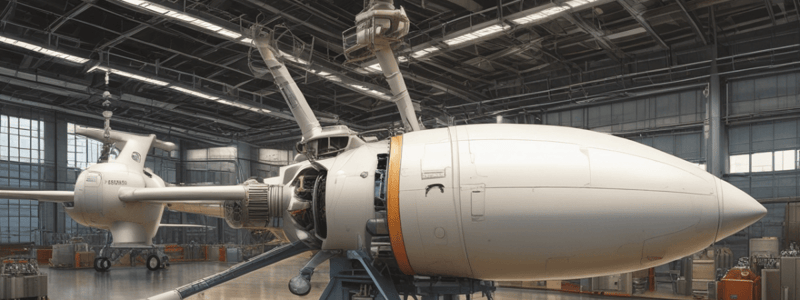Podcast
Questions and Answers
What component is responsible for providing suction to the gyros?
What component is responsible for providing suction to the gyros?
- A dry-type engine-driven vacuum pump (correct)
- A wet-type vacuum pump
- A gear-driven alternator
- A belt-driven pressure regulator
What happens to the reading of the suction gauge as the central air filter becomes dirty?
What happens to the reading of the suction gauge as the central air filter becomes dirty?
- It decreases gradually (correct)
- It increases dramatically
- It fluctuates significantly
- It remains constant
Where is the suction relief valve located in relation to the vacuum pump?
Where is the suction relief valve located in relation to the vacuum pump?
- Between the pump inlet and the instruments (correct)
- At the firewall adjacent to the central air filter
- In the cabin near the instruments
- Between the pump outlet and the instruments
What type of air filter is utilized in the system described?
What type of air filter is utilized in the system described?
What does the suction gauge reading indicate in the system?
What does the suction gauge reading indicate in the system?
Flashcards are hidden until you start studying
Study Notes
Gyro Operation and Vacuum System
- Gyros operate using suction provided by a dry-type, engine-driven vacuum pump.
- The pump is gear-driven and connected through a spline-type coupling for efficient power transfer.
- A suction relief valve regulates system pressure, ensuring optimal performance between the pump inlet and instruments.
Vacuum Line and Instrumentation
- The vacuum line directs suction from gyro instruments to the relief valve, which is strategically placed at the firewall within the cabin.
- This configuration helps maintain the integrity of the vacuum system and protects the instruments.
Central Air Filter
- A disposable central air filter is installed in the system to prevent contaminants from entering gyros and maintain performance.
- The filter is designed for quick replacement, facilitated by straps that allow for easy removal and installation.
Suction Gauge Monitoring
- The suction gauge measures the net difference in suction pressure before and after airflow passes through a gyro.
- As the central air filter collects dirt and debris, the differential pressure decreases, leading to a lower suction gauge reading, indicating the need for filter maintenance.
Studying That Suits You
Use AI to generate personalized quizzes and flashcards to suit your learning preferences.




